Read missed the last six games after suffering a concussion on December 31. With Read set to return the Flyers returned Tye McGinn to the AHL. Read has recorded 19 points (10G / 9A) in 39 games this season.
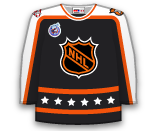
Read missed the last six games after suffering a concussion on December 31. With Read set to return the Flyers returned Tye McGinn to the AHL. Read has recorded 19 points (10G / 9A) in 39 games this season.

Stafford went through practice this morning in First Niagara Center wearing a red non-contact jersey. Stafford has missed the past three games after suffering an upper-body injury against the Minnesota Wild on January 2. "I think it's more a day-to-day kind of thing," Stafford said. "I had a really long day today, a hard-working day, so we'll see how it responds later today and tomorrow morning. That's pretty much where we're at." Stafford has four goals and nine assists in 41 games this season.
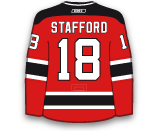
Lapierre was the recipient of a hit late in the game by the Canucks' Dan Hamhuis. Hitchcock said that Lapierre did not return. "Don't know yet (about Lapierre's status)," head coach Ken Hitchcock said. "He took that hit late in the game, that low hit there. He's been exercising full, but not able to skate on a full-time basis. So we'll evaluate him tomorrow and see if he can play tomorrow." The fourth line in Monday's practice was made up of Brenden Morrow, Ryan Reaves and Adam Cracknell.
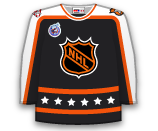
Polak has missed the last 10 games with a partially fractured left ankle. "I think I'm pretty close," Polak said. "I think I have the green light to go. I don't know when ... if it's going to be tomorrow, the day after. I'm going to do whatever I can to get back in the lineup and we'll see what the coaches decide." Head coach Ken Hitchcock said that Polak will be re-evaluated Tuesday morning.
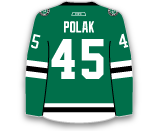
Hall's absence at practice has his status for Tuesday's game in jeopardy. Check back after the Oilers morning skate tomorrow. He has 43 points (18G / 25A) in 41 games this season.

The Avalanche have recalled Sami Aittokallio from Lake Erie to serve as the team's second goalie behind Semyon Varlamov while Giguere is out. There is no word on how long Giguere is expected to be sidelined.
Bennett has been out since November 22 and likely won't return until after the Olympic break.
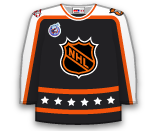
Gibbons was injured on Saturday and did not return. With Gibbons and Pascal Dupuis both out, someone else will move up and skate with Sidney Crosby and Chris Kunitz. There is no word who that will be, but whoever it is certainly gets a temporary spike in fantasy value.
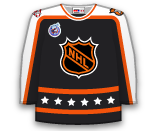
Steen is progressing well, but there is still no timetable for his return. Steen has missed the last nine games and likely won't play tomorrow against Phoenix.
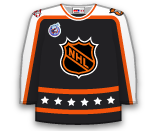
Salo is expected to be replaced by Mark Barberio after suffering a bruised ankle in Saturday's win over Flyers. Salo likely won't play on Tuesday either, but he is not expected to be out longterm.
Edler has been progressing toward his return recently and the assignment of Frank Corrado to the AHL suggests that Edler will return after a 16 game absence. Edler struggled in his first 27 games this season, he recorded just nine points (3G / 6A) and a minus-12 rating.

Bishop missed the last four games with a sprained wrist but is ready to be activated from IR and dress tonight. Bishop has become one of fantasy's elite backstops this season, monitor his status tomorrow and get him in your lineup if he starts.

Tlusty, 25, has missed Carolina’s last eight games after undergoing an emergency appendectomy on December 24. He has scored six goals and earned four assists (10 points) in 36 games this season. Tlusty is in his seventh professional season and his fifth with the Hurricanes. He has scored 63 goals and earned 59 assists (122 points) in 313 career NHL regular-season games with Toronto and Carolina.
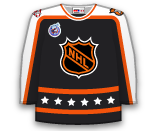
Staal missed the last four games, but will return tonight against the Flames. He will skate on the top line with Jeff Skinner and Alex Semin. He enters play with 35 points (10G / 25A) in 42 games this season.
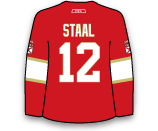
Kane will miss his second consecutive game with a hand injury. Kane did not practice with the team this morning, but did skate with the other injured Jets players. Monitor Kane's status leading up the Thursday's game in Calgary.

Cammalleri will not play tonight or tomorrow and is questionable for the other two games this week (Thursday and Saturday). There is no word when Cammalleri suffered the concussion, but the Flames have recalled Ben Street to replace Cammalleri.

Tatar honoured his dad by scoring a goal and adding an assist the day after his passing. He has amassed 19 points (10G / 9A) in 38 games and is worth a look in deep leagues, especially if he sticks in the top-6 when the Red Wings start getting healthy.

Getzlaf missed the third period of Saturday's contest after taking a puck to the foot in the second period. The good news is that x-rays came back negative and he is not expected to miss and extended period of time. Monitor his status at Ducks practice leading up to Wednesday's game vs. Vancouver.
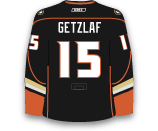
Datsyuk will miss his fourth straight game tonight. The Red Wings are off until Thursday after tonight, so even if Datsyuk is close, they are giving him the extra rest until they face the Rangers on Thursday.
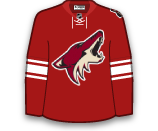
Alfredsson did not play on Saturday night and will be forced to miss tonight's contest vs. the Ducks as well. The Red Wings are off until Thursday, so they are likely taking the safe route with their injury forwards, as Pavel Datsyuk, Johan Franzen and Darren Helm all won't play either.
The NHL injury report is updated daily so that you can see the latest injury news ahead of puck drop in any of today’s matchups. Seeing timely updates to the NHL injury report can make a major impact on your daily fantasy sports picks and wagers on a particular game. All information provided on the NHL injury report is provided directly by the NHL and each respective franchise to ensure accuracy.
While the minimum amount of time spent on the injured reserve list is seven calendar days, there is no maximum amount of time that a player can be placed on the injured reserve list. If a player is set to be sidelined for longer than 24 calendar days or 10 NHL games, then a club may opt to place them on the long-term injured reserve instead. This allows franchises with the ability to exceed the salary cap while a player is placed on this reserve list.
No injury recovery timeline is the same as another as there are several factors that go into the rehab process for a player being affected by injury. Factors include but are not limited to, injury severity, player injury/medical history, age, as well as the location of the injury. Some injuries are able to clear up in a matter of days, while others may take an athlete out of action for the entirety of a season.